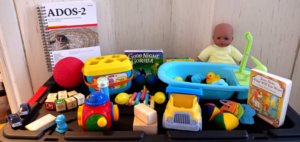LISTEN TO THE PODCAST (by prof. L.A. Ramenghi)
WHAT IS INTRAVENTRICOLAR HEMORRHAGE?
Intraventricular haemorrhage is a brain lesion that affects predominately preterm infants.
It originates from the germinative matrix, which enters into the brain ventricles (some cavities within which the
cerebrospinal fluid, a clear and colourless fluid connected between the brain and the spinal cord and the rachis, flows). When blood enters into, it not only gets dirty, but gets irritated and, as a result, it can inflate these ventricles which gradually widen. This is one of the most typical complications.
In this case, post-haemorrhagic ventricular dilation is also defined as post-haemorrhagic hydrocephalus. This condition occurs predominantly in the first three to maximum five days of life of premature infants. It is all the more frequent as they are of lower gestational age.
Life-compatible prematurity starts from twenty-three to twenty-four weeks. Of course, a child of twenty-three to twenty-four weeks is exposed to risks when compared to one of twenty-eight weeks. Consequently, a twenty-eight-week baby risks more than a thirty-week one. These risks exist until the thirty-second or thirty third week.
WHY DOES IT BLEED?
The reason for bleeding is twofold: the germinative matrix (the brain structure that remains since foetal life) has worked very hard to produce neurons, then it gradually disappears.
Thus, the lower the gestational age, the more it is represented at twenty-three/ twenty-four weeks in the order of two to three, or even four millimetres thick. It is made of a very weak and fragile substance, with equally fragile vessels and therefore it easily bleeds. Of course, these children, are very unstable especially in the first few days of life. From a clinical point of view, they have pressure swings and respiratory problems.
So, the lung causes the heart to fill up at times with difficulty. There are several causes that encourage these vessels’ rupture and intra-ventricular haemorrhage appearance. Obviously, this situation is much more frequent in premature infants who live outside the mother’s womb; but this is possible for various reasons, often still unknown, even during foetal life, that is, when the fetus quietly lies in the mother’s womb.
The recognized causes of these bleedings—when they occur in stages during foetal life—are mainly traumas, but perhaps some predisposing genetic conditions could exist as well. Those ones are at study stage.
WHAT ARE THE POSSIBLE COMPLICATIONS?
We have already mentioned one, that of post-haemorrhagic hydrocephalus. Often, it is the way in which you notice this event when it rarely happens at the intrauterine level: we speak of an incidence of one in every ten thousand born.
Conversely, intra-ventricular haemorrhage in premature children (under 31 weeks of gestation, weigh less than 1500 grams) reaches 25%, depending on how it is diagnosed.
Through resonance (the most refined way to see small bleedings) you also reach 30-35% of this population. So, more than one every three may have this bleeding.
Another dreaded complication that occurs during the acute phase (first three, four, five six days) is the so-called unilateral venous infarction (i.e. only one side). This term refers to the suffering of the cerebral parenchyma, probably due to the compression of dilatation to these small venous vessels’ thrombosis, because the intraventricular haemorrhage has a venous origin.
When we talk about a bleeding, it’s thought to be an arterial vessel that breaks down and continues to drain blood—high blood pressure? Not at all. It’s a haemorrhage coming from venous vessels.
So, this brain substance compression, on the parenchyma, causes it to suffer progressively.
Its venous drainage is prevented, contrasted and therefore, this suffering slowly leads to the brain substance’s death around the peri-ventricular ventricles.This means that there is just a loss of substances and therefore, you cut some white matter fibers.
Some motor results are possible. They derive from the venous infarction’s location and size (that is, in what position is it?): those ones may be around the lateral ventricles, around the frontal horn, around the temporal horn or occipital horn.So, it’s the position that counts (regardless of the amount of substance lost)
WHAT TYPES OF INTERVENTION ARE POSSIBLE?
The post-haemorrhagic hydrocephalus complications can be treated by neurosurgery. There are different types of interventions. In the first procedure, the external derivation is used in the hope that a little tube, which drains the cerebrospinal fluid outside the brain, is not necessary to attach it to a constant drainage later.
In this way it is possible to avoid this constant drainage that is connected to the peritoneum. So, there is a tube that comes out of the brain and goes up to the peritoneum in at least 50-60% of cases. Other techniques consist of placing a catheter under the skin every day, twice a day. This method also tries to prevent the placement of a permanent ventricular-peritoneal derivation that the newborn could carry during all its life.
IT IS POSSIBLE TO GET BACK TO A NORMAL LIFE?
It is comforting that both in post-haemorrhagic hydrocephalus, if well treated, and in the venous infarction, if it is small, a baby can aspire with a good dose of hope to a perfectly normal life, even in those children who have a permanent derivation of peritoneal ventricle type.
Written originally in Italian by: prof. dr. L.A. Ramenghi
SEO and English translation: M.E. Canepa




